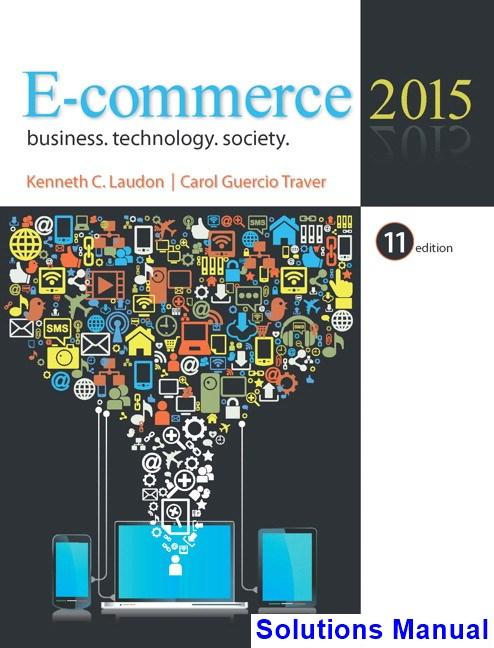
More products digital (pdf, epub, mobi) instant download maybe you interests ...
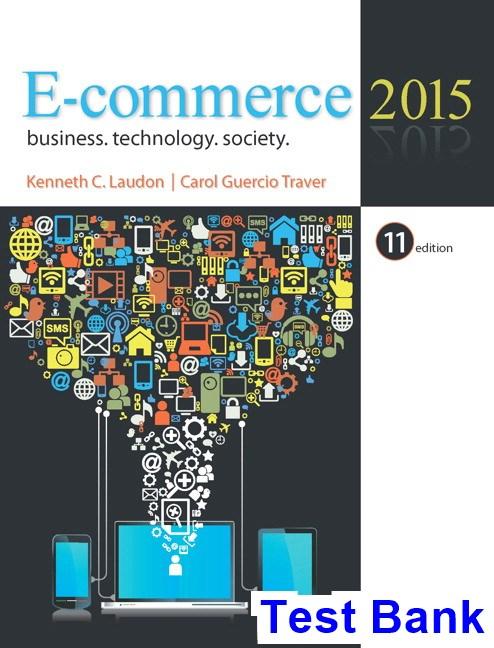
E-Commerce 2015 11th Edition Laudon Test Bank
https://testbankfan.com/product/e-commerce-2015-11th-editionlaudon-test-bank/
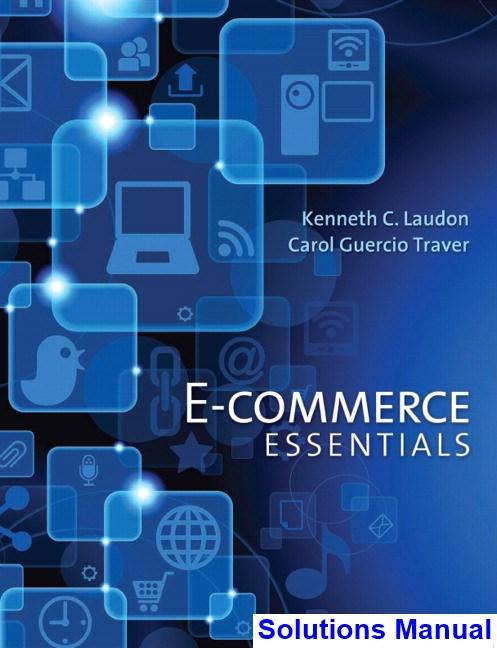
E-Commerce Essentials 1st Edition Laudon Solutions Manual
https://testbankfan.com/product/e-commerce-essentials-1stedition-laudon-solutions-manual/
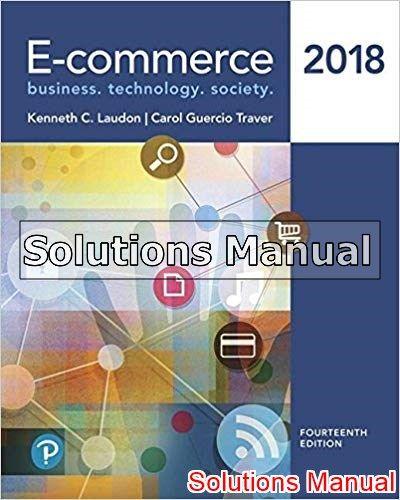
E-commerce 2018 14th Edition Laudon Solutions Manual
https://testbankfan.com/product/e-commerce-2018-14th-editionlaudon-solutions-manual/
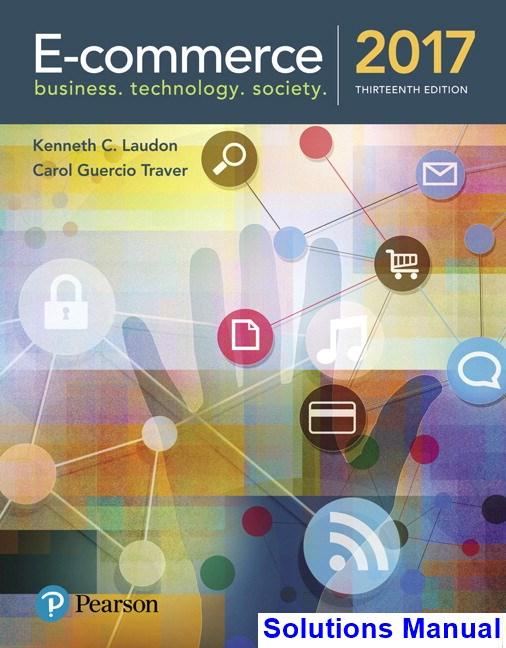
E Commerce 2017 13th Edition Laudon Solutions Manual
https://testbankfan.com/product/e-commerce-2017-13th-editionlaudon-solutions-manual/
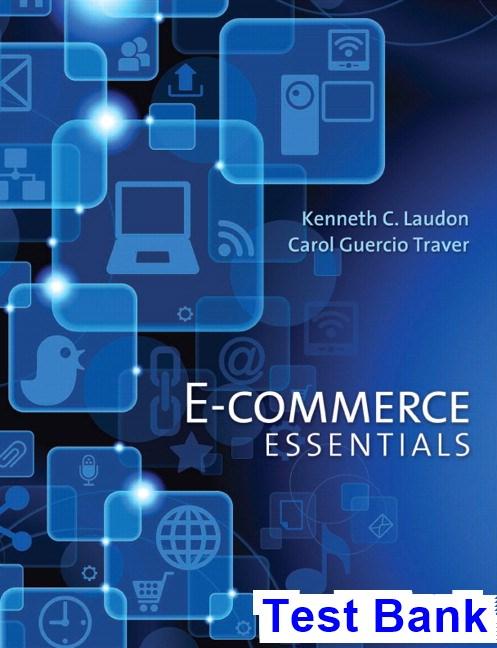
E-Commerce Essentials 1st Edition Laudon Test Bank
https://testbankfan.com/product/e-commerce-essentials-1stedition-laudon-test-bank/
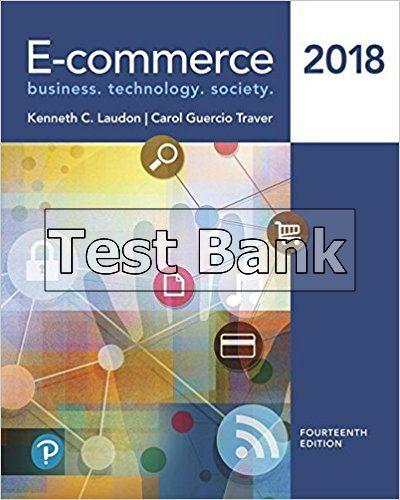
E Commerce 2017 14th Edition Laudon Test Bank
https://testbankfan.com/product/e-commerce-2017-14th-editionlaudon-test-bank/
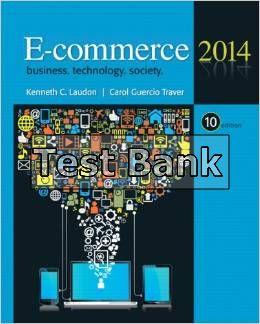
E Commerce 2014 10th Edition Laudon Test Bank
https://testbankfan.com/product/e-commerce-2014-10th-editionlaudon-test-bank/
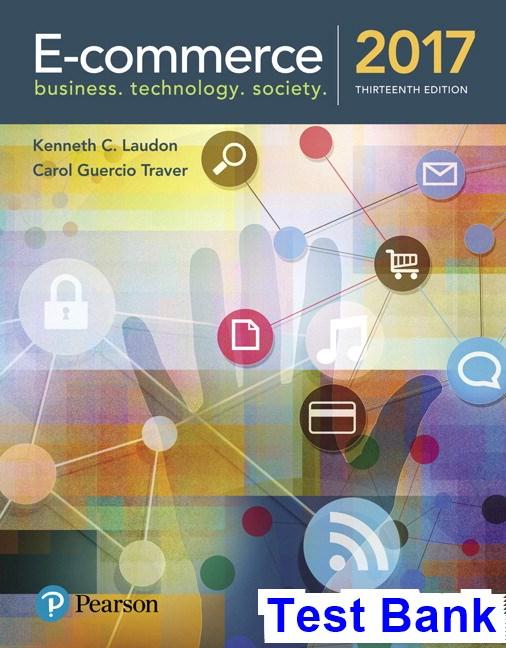
E Commerce 2017 13th Edition Laudon Test Bank
https://testbankfan.com/product/e-commerce-2017-13th-editionlaudon-test-bank/
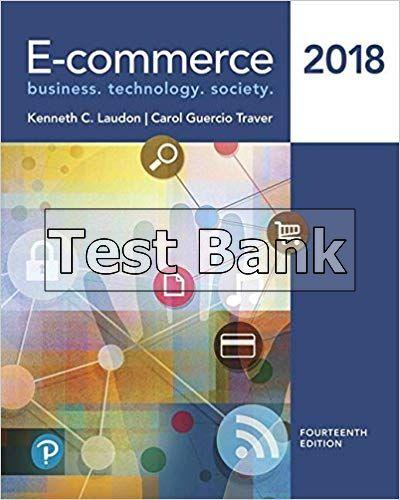
E-commerce 2018 14th Edition Laudon Test Bank
https://testbankfan.com/product/e-commerce-2018-14th-editionlaudon-test-bank/
Instructor’s Manual: Chapter 7
Social, Mobile, and Local Marketing
Teaching Objectives
• Explain the difference between traditional online marketing and the new social-mobilelocal marketing platforms and the relationships between social, mobile, and local marketing.
• Explain the social marketing process from fan acquisition to sales and the marketing capabilities of social marketing platforms such as Facebook, Twitter, and Pinterest.
• Identify the key elements of a mobile marketing campaign including app and in-app marketing.
• Explain the capabilities of location-based local marketing.
Key Terms
dark social, p. 424 fan acquisition, p. 424 engagement, p. 425 amplification, p. 425 community, p. 425 social density, p. 426 Like button, p. 428
Facebook Exchange (FBX), p. 430
location-based marketing, p. 464
location-based services, p. 464
geo-aware, p. 467
proximity marketing, p. 467
Brief Chapter Outline
Facebook: Putting Social Marketing to Work
7.1 Introduction to Social, Mobile, and Local Marketing
From Eyeballs to Conversations
From the Desktop to the Smartphone and Tablet
The Social, Mobile, Local Nexus
7.2 Social Marketing
Social Marketing Players
The Social Marketing Process
Facebook Marketing
Insight on Technology: Fairmont Hotels: Using Google Analytics to Optimize Social and Mobile Marketing
Twitter Marketing
Pinterest Marketing
The Downside of Social Marketing
Insight on Society: Marketing to Children of the Web in the Age of Social Networks
7.3 Mobile Marketing
Overview: M-commerce Today
Basic Mobile Marketing Features
Mobile Marketing Tools: Ad Formats
Starting a Mobile Marketing Campaign
Insight on Business: Mobile Marketing: Land Rover Seeks Engagement on the Small Screen
Measuring Mobile Marketing Results
7.4 Local and Location-Based Marketing
The Growth of Location-Based (Local) Mobile Marketing
Location-Based Marketing Platforms
Location-Based Mobile Marketing: The Technologies
Why is Local Mobile Attractive to Marketers?
Location-Based Marketing Tools
Starting a Location-Based Marketing Campaign
Measuring Location-Based Marketing Results
7.5 Case Study: ExchangeHunterJumper.com: Building a Brand with Social Marketing
7.6 Review
Key Concepts Questions
Projects References
Figures
Figure 7.1 Social, Mobile, and Local Marketing 2013–2016, p. 421
Figure 7.2 Online Marketing Platforms, p. 422
Figure 7.3 Engagement at Top Social Sites, p. 424
Figure 7.4 The Social Marketing Process, p. 425
Figure 7.5 The Growth of Mobile Commerce, p. 451
Figure 7.6 The Mobile Top Ten U.S. Retailers, p. 452
Figure 7.7 How People Use Their Mobile Devices, p. 453
Figure 7.8 M-commerce Revenues by Device, p. 454
Figure 7.9 Mobile versus Desktop Marketing Expenditures 2012–2018, p. 456
Figure 7.10 The Top Mobile Marketing Firms by Revenue, p. 457
Figure 7.11 U.S. Mobile Ad Spending by Format, p. 458
Figure 7.12 Measuring the Effectiveness of a Mobile Branding Campaign, p. 463
Figure 7.13 Local, Mobile, and Location-Based Mobile Marketing, p. 465
Figure 7.14 Location-Based Mobile Ad Format Spending, p. 466
Tables
Table 7.l Basic Facebook Features, p. 427
Table 7.2 Basic Facebook Marketing Tools, p. 430
Table 7.3 Selected Facebook Marketing Campaigns, p. 431
Table 7.4 Measuring Facebook Marketing, p. 432
Table 7.5 Twitter Features, p. 437
Table 7.6 Twitter Marketing Tools, p. 439
Table 7.7 Selected Twitter Marketing Campaigns, p. 440
Table 7.8 Measuring Twitter Marketing Results, p. 441
Table 7.9 Pinterest Features, p. 443
Table 7.10 Pinterest Marketing Tools, p. 444
Table 7.11 Selected Pinterest Marketing Campaigns, p. 445
Table 7.12 Measuring Pinterest Marketing Results, p. 447
Table 7.13 Features of Mobile Devices, p. 457
Table 7.14 Selected Mobile Marketing Campaigns, p. 459
Table 7.15 Major Locating Technologies, p. 468
Table 7.16 Location-Based Marketing Tools and Campaigns, p. 470
Table 7.17 Mobile Location-Based Marketing Effectiveness, p. 472
Teaching Suggestions
Chapter 7 focuses on the “new” online marketing platforms: social, mobile, and local. There is a major shift in thinking involved in these new marketing platforms. The traditional Web marketing emphasis on “eyeballs” and spraying large populations with messages has changed to place a greater emphasis on engaging the customer in conversations. In addition, the technology platform is shifting from the desktop to mobile devices. This is more than just a technology change. It’s also a behavioral change because customers are much “closer” to their mobile devices than desktops, and hence offer marketers many more opportunities to send messages, and to, in a sense, surround the consumer with the same message on multiple platforms. Social, mobile, and local marketing platforms are connected and self-reinforcing. The mobile audience is a major user of social sites like Facebook, and local marketing often involves social geotargeting. Mobile devices are also a major channel for local advertisers who can touch customers as they pass their stores.
A good way to introduce the discussion of social, mobile, and local marketing is to review the opening case in Chapter 7, Facebook: Putting Social Marketing to Work. Facebook’s effort to morph itself into a marketing and advertising platform is an example of how new Internet technologies and practices can disrupt and challenge existing industries, in this case, the marketing and advertising industries. Class discussion questions might include the following:
• Have you ever made a purchase based on something you have read or seen on Facebook? What was the product and what made you interested?
• What obstacles does Facebook face in monetizing itself as a marketing and advertising platform?
• Are there other ways for Facebook to make a profit from marketers and advertisers?
• How does Facebook engage its users any more than traditional Web marketing?
Key Points
Social, Mobile, and Local Marketing. Today, social, mobile, and local marketing are the fastest growing forms of online marketing. Walk students through Figure 7.1 to illustrate how fast mobile marketing is growing. It’s taken five years for this new landscape to emerge, and firms are still learning how to use the new social and mobile marketing technologies. Figure 7.2 puts this growth into perspective: traditional online marketing remains the dominant platform, even as mobile, social, and local marketing grow rapidly. In other words, marketing to the desktop remains the dominant force in online marketing, at least for now.
Some key points to make in this section are:
• Marketers will be spending almost twice as much on mobile marketing as they do on social marketing to the desktop.
• Social, mobile and local are connected: over 75% of Twitter’s users access the service using mobile devices; about 30% of Facebook’s users are mobile-only members.
Social Marketing. This section focuses on social marketing and social marketing platforms like Facebook, Twitter, and Pinterest. While Facebook is the dominant social network in terms of visitors and engagement (Figure 7.3), there is significant competition in this market, and differentiation. Figure 7.4 illustrates the social marketing process as a series of five steps or stages: fan acquisition, engagement, amplification, community, and finally brand strength or sales. This is a very important concept for understanding the chapter, so take a few minutes to walk students through this diagram and the underlying concepts.
Before you delve into Facebook marketing in depth, take 5 minutes to review the basic features of Facebook with students. They probably know all these features already, but be sure to illustrate how Facebook develops features to maximize the amount of social interaction on its site by connecting users to one another whether they want to be connected or not. Explain the concept of “social density” and relate this concept to the marketing opportunities on Facebook. Review the list of marketing tools currently being used by Facebook (Table 7.2) with students. Further questions for class discussion might include the following:
• Which Facebook marketing tools do students find are the most effective in their personal lives?
• Do students pay attention to Facebook ads?
• Are students interested in what their friends buy?
• Do students trust their friends to recommend products?
• What kinds of products would their friends choices impact?
Table 7.4 describes some of the metrics used to measure Facebook marketing campaigns. Ask students how these might be different from a traditional online marketing campaign using display ads.
When you turn to marketing using Twitter, once again take five minutes to review the basic features of Twitter with students. As with Facebook, most will probably already be familiar with many of these features, but be sure to illustrate how Twitter takes these features and develops them into marketing tools. Twitter offers 140-character messages, and it may seem difficult at first for students to understand how marketers can influence consumers in such a small “space.” The Timeline is similar to Facebook’s Newsfeed and in an ideal location to
expose users to ads. To make the conversation more concrete, review Table 7.7, which describes some Twitter marketing campaigns.
Questions for class discussion might include the following:
• Which Twitter marketing tools do students find are the most effective in their personal lives?
• Do students tweet during television programs?
• Do students pay attention to Promoted Tweets?
• Do students pay attention to Promoted Trends posted by marketers?
• Do students trust their friends to recommend products?
Table 7.8 describes some of the metrics used to measure Twitter marketing campaigns. Ask students how these might be different from a traditional online marketing campaign using display ads.
Pinterest is the third major social marketing platform that the text covers. Although students are likely to be very familiar with Facebook and Twitter, they may be less familiar with Pinterest, so review the basic features of Pinterest in Table 7.9 with them and discuss which features can be developed into marketing tools. To make the conversation more concrete, review Table 7.11, which describes some Pinterest marketing campaigns.
Walk students through the process of developing a Pinterest marketing campaign. Pinterest campaigns depend on the graphical nature of the product, demographics of the audience, competitors, and the strengths of a firm. The simplest place to start is to create a brand page and start pinning photos. Walk students through the steps outlined in the text. Ask students to think about how they would measure the success of a Pinterest campaign. The text highlights key dimensions like fan (follower) acquisition, engagement, amplification, community, and sales. Table 7.12 describes some basic ways to measure the results of a Pinterest marketing campaign.
Questions for class discussion might include the following:
• Which Pinterest marketing tools do students think will be most effective?
• Have students used Pinterest to shop? Did shopping lead to a purchase?
• Have students visited brand pages? Which were effective?
A good way to pull all these themes of social marketing and platforms together is to review the Insight on Technology, Fairmont Hotels: Using Google Analytics to Optimize Social and Mobile Marketing case. This case provides an interesting real-world example of a firm’s use of social media, and the challenges and rewards of developing an integrated social media campaign that crosses many ad platforms, from Facebook to Twitter to Pinterest. Questions for class discussion might include:
• How do social technologies help identify and attract loyal customers?
• What are the challenges in measuring the effectiveness of social marketing campaigns?
• What were the advantages Fairmont Hotels found in using Google Analytics?
Finally, ask students to discuss some of the downsides of social marketing. Obviously, firms do not have total control over the marketing messages if users of their products are able to freely
opine on the quality of their products. So there is a risk for firms that their shortcomings will be widely broadcast. Because young people (ages 12 to 18) are very involved in social networks, and often reveal details of their identity that they quickly lose control over on sites like Facebook that freely distribute personal information, marketers need to take care how they exploit personal information in their social marketing campaigns.
A good way to introduce these issues is to review the Insight on Society Case, Marketing to Children of the Web in the Age of Social Networks. This case offers a discussion of the social implications of marketing to children and the special care that managers must exercise in this situation. You might ask students with children or younger siblings what kinds of online and offline ads they find objectionable for their loved ones. Other questions for class discussion might include the following:
• Why is online marketing to children a controversial practice?
• What is the Children’s Online Privacy Protection Act (COPPA) and how does it protect the privacy of children?
• How do companies verify the age of online users?
• Should companies be allowed to target marketing efforts to children under the age of 13?
Mobile Marketing This section introduces and reviews mobile marketing the use of mobile devices to deliver consumer marketing messages. Ask students if they have a smartphone or tablet mobile device and how often they use it? Have they ever shopped using their smartphone? Purchased something? If so, they’ve participated in mobile commerce, along with others who have seen advertising on their phones. Mobile commerce is growing rapidly, and mobile marketing even faster. Review Figure 7.5, which illustrates the growth in mobile commerce. Also note that while mobile commerce is growing fast, people will still be using their desktops to make purchases over the next 5 years, although they will increasingly use their mobile devices to shop. Make sure students understand the difference between shopping and purchasing. Because people carry their mobile devices with them everywhere, they make for an ideal marketing tool because marketers can contact consumers just about anytime and place.
The Insight on Business case, Mobile Marketing: Land Rover Seeks Engagement on the Small Screen, illustrates some of the ways mobile marketing is different from “traditional” online marketing. Questions for class discussion might include the following:
• Why do mobile devices represent such a promising opportunity for marketers?
• Have you ever responded to mobile marketing messages?
• What are some of the new types of marketing that mobile devices have spawned?
Review Figure 7.7 with students and elicit from them how they use their smartphones. It might be surprising to students that entertainment tops the list of mobile activities. You might start a tally on the blackboard or whiteboard and ask for a show of hands for each category of use in Figure 7.7. Just about all smartphone owners use apps. Ask students why in-app ads might be more effective than mobile display ads
Mobile devices have created a multi-screen world for consumers: people watch TV, use their desktop at work (often to shop), and use their tablets and smartphones to watch movies or text
with friends. Ask students how many of these screens they use. What are the implications for marketers? The answer: marketers need coordinated campaigns to be on all these platforms.
ERRATA: In Figure 7.8, the color labels for tablets and “other” were inadvertently reversed. Tablet computers are the largest source of mobile commerce revenues and are indicated by the top line of the line graph.
Figure 7.9 illustrates how fast mobile marketing is growing. By 2015, mobile marketing will be almost as large as desktop marketing, and is expected to exceed desktop marketing expenditures in 2016. This is a result of all you have discussed to this point in the class, namely, mobile devices are almost always on (unlike a TV or desktop computer), and they can deliver very relevant ads often tied to local deals. The big players in mobile ads are familiar (Figure 7.10): Google dominates, followed by Facebook, Twitter and Pandora. YP, the online yellow pages, is also a big player, as is Apple. Ask students why Google is so dominant? Answer: people use their mobile devices to search, especially local search and often use maps. Google is the leader in both search and maps.
Mobile marketing formats mimic closely desktop formats display, search, video, and text. Table 7.14 provides a list of familiar firms and how they are using mobile ad campaigns. Starting a mobile campaign involves considering how your product fits into a mobile marketing platform, the demographics you are looking for, and an analysis of what your competitors are doing. Mobile campaigns should start out simple translate your Web page to a mobile Web site, develop brand pages on Facebook, Twitter and Pinterest, and use Google or Apple mobile ad services because they have excellent analytics tools for tracking results.
Walk students through Figure 7.12 to illustrate how the effectiveness of a mobile branding campaign can be evaluated. As you can see, there are many parts of a mobile branding campaign to pay attention to.
Local and Location-Based Marketing This section describes local and location-based marketing. It’s important for students to understand the difference between the various types of local marketing. Most local marketing involves traditional newspaper and television ads, but online local marketing is rapidly catching up to traditional channels. Location-based marketing targets messages to consumers based on their actual physical location. This is inherently a mobile device situation because mobile phones and tablets can be located by latitude and longitude fairly precisely. The same is not true of a desktop computer. Go over the list of location-based services so students get a clear sense of the matter. Review Figure 7.13 with students to put location-based mobile marketing into the overall context of Web marketing.
Location-based marketing is dominated by Google, which also dominates the mobile marketing field. Point out to students the importance of Google Maps: it’s not just to help people find their way Google Maps is an important advertising tool for local businesses. Similarly, Apple is rapidly developing its own mapping service in order to display location-based ads. Ask students why they think location-based ads might be more effective than other ads on mobile devices. Answer: when people search for something locally (a pizza, shoes, clothing, etc.) they are close to a purchasing decision. Local search is very immediate.
Be sure to briefly review the technologies that make location-based marketing possible. Most students will know about GPS, but that alone is not enough to precisely locate people. Other techniques involve Wi-Fi, geo-search, cell tower, and sign in/registration. There are two kinds of location-based marketing capabilities based on these technologies: geo-aware and geofencing techniques. Geo-aware techniques identify the location of a user’s device and then targets marketing to the device, recommending actions near that location, which also requires the marketer to know where relevant things like stores are located. For instance, a marketer may target smartphones within several square city blocks to alert them to available offers from participating merchants. Proximity marketing techniques identify a perimeter around a physical location, and then target ads to users within that perimeter, recommending actions possible within the fenced-in area. Proximity marketing can permit marketing to consumers as they walk by the store, or walk through a store. [Add iBeacon]
Table 7.16 describes some of the unique location-based marketing tools. Go over each type in class to ensure students understand all the technical possibilities for marketing based on user location. In general, location-based ads use the same ad formats as desktop advertising search, display, and video are the top three.
Starting a location-based campaign begins with an assessment of whether your products or services have a local component. Are there local stores or entertainment sites where users can purchase the service? Location-based ads will be most successful with younger, more affluent, and more educated consumers. You should also be aware of how your competitors are using location-based marketing, if at all. Measurements of the results of location-based marketing follow a familiar path of measuring fan acquisition, engagement, amplification, community, and brand strength (sales).
The concluding case ExchangeHunterJumper.com: Building a Brand with Social Marketing provides an interesting example of how a small business in an arcane area of commerce built a brand name for itself on the Internet.
Case Study Questions
1. Find a site on the Web that offers classified ads for horses. Compare this site to ExchangeHunterJumper.com in terms of the services offered (the customer value proposition). What does the Exchange offer that other sites do not?
Bigeq.com is one popular site that also offers classified ads for horses, and is probably ExchangeHunterJumper.com’s strongest competitor. One service that the Exchange offers that this site does not is that the Exchange professionally screens horses that are listed, while Bigeq.com allows anyone to post sales ads. Therefore, the horses on the Exchange are more likely to be appropriately described and have a better track record than those on Bigeq.com. However, this does mean that Bigeq.com typically has more horses listed than the Exchange does. Another service that the Exchange provides is that all of the horses listed have highquality videos and photos embedded within the site that the customer can view, while not all of the horses on Bigeq.com have videos or photos, and those that do are linked to YouTube, some of which are not very good quality. The Exchange continually updates information on
the horses available, while the ads on Bigeq.com are static once they have been submitted by the seller.
2. In what ways were social media effective in promoting The Exchange brand? Which media led to the most increase in sales and inquiries? Why?
ExchangeHunterJumper.com uses the following social media: Facebook, Twitter, YouTube, RSS Feeds, and an iPhone app. The biggest increase seems to have come from Facebook although the YouTube videos also appear to have had an impact also. Facebook probably worked so well because of its viral recommending features (the Like button) and the ease with which word can be spread on Facebook.
3. Make a list of all the ways the Exchange attempts to personalize its services to both sellers and buyers.
• Works with individual sellers and trainers on the sell side to create effective ads, including photos and videos.
• Develops a personal strategy for each horse (horses have personalities too!).
• Buyers fill out forms and expected budgets.
• Personal e-mail responses to buyer queries.
• Searching for suitable horses
• Making recommendations.
End of Chapter Questions
1 Describe the two factors which make social, local, and mobile marketing different from traditional online marketing.
One change is the change from unique visitors and ad impressions towards an emphasis on consumer conversations and consumer engagement. A second change is the rapid growth of mobile devices, which provides many new opportunities to send marketing messages than what is true of the desktop platform.
2. Why are social, mobile, and local marketing efforts interconnected?
Visits to social sites increasingly originate from mobile devices. As mobile devices become more popular, they can increasingly be used as a platform for location-based and location marketing.
3 Why is the connection between social, mobile, and local marketing important to marketers?
When marketers design a social marketing campaign, they must also consider that their customers will be accessing the campaign using mobile devices, and often they will also be looking for local content. Social-mobile-local must be seen in an integrated management framework.
4 Identify the objectives of social marketing.
In social marketing, the objective is to encourage your potential customers to become fans of your company’s products and services, to engage with your business by entering into a conversation with it, to encourage your business’s fans to share their enthusiasm with their friends, and create a community of fans online. The end objective is to strengthen the brand and drive sales, and to do this by increasing your “share of online conversation.”
5. Identify the major social network sites.
The major social network sites in 2014 are Facebook, LinkedIn, Twitter, Pinterest, Tumblr, Instagram, Google+, and Myspace.
6. What are the five elements of the social marketing process?
The five elements of the social marketing process are fan acquisition, engagement, amplification, community, and building brand strength and ultimately sales.
7. What the three most important features of Facebook for marketers to consider?
The three most important features of Facebook for marketers to consider are News Feed, Timeline (and Profile) and Graph Search.
8 List and briefly describe the basic Facebook marketing tools.
Basic Facebook marketing tools are as follows:
• Like button: a Facebook plug-in that Web sites and Facebook pages use to enable user feedback and support.
• Brand pages: a central Web page for a company that is hosted by Facebook.
• News Feed Page Post Ads: marketing messages inserted into user News Feed
• Right-hand Column Sidebar Ads: display ads in the right column.
• Mobile ads: ads placed on the Facebook mobile app and Facebook mobile pages, including app install ads and in-app ads.
• Facebook Exchange (FBX): a real time bidding systems that enables real-time bidding and sale of Facebook ads.
9. How can you measure the results of a Facebook marketing campaign?
You can measure the results of Facebook marketing campaign using the social process marketing model: fan acquisition, engagement, amplification, community, and building brand strength and ultimately sales.
10 List and briefly describe Twitter marketing tools.
The basic Twitter marketing tools are as follows:
• Promoted Tweets: advertisers pay to have their tweets appear in users’ search results.
• Promoted Trends: advertisers pay to move their hashtags to the top of Twitter’s Trends list.
• Promoted Accounts: advertisers pay to have their branded account suggested to users on the “Who to follow” list.
• Enhanced Profile Pages: companies pay to display their brand logo or banner at the top of the company’s timeline.
• Amplify: a Twitter dashboard that allows marketers to send messages to users who followed a show or brand.
• Television ad Retargeting: marketers can target ads to users who are watching a TV show.
• Lead Generation Cards: marketers can embed a “card” into business tweeters standard Twitter messages.
• Mobile ads: marketers can use all of the above formats on mobile devices, as well as mobile app install and app engagement ads
11. How can you measure the results of a Twitter marketing campaign?
You can measure the results of a Twitter marketing campaign by looking at the following:
• Fan acquisition: impressions generated by your Promoted Tweets; the number of followers and monthly growth.
• Engagement: the number of comments, responses, and re-tweets of your tweets, and time that followers stay on your page.
• Amplification: the rate at which fans re-tweet or share your tweets.
• Community: monthly interaction rate (a total of comments, responses, and re-tweets). Average on-site time for all followers. The ratio of positive to negative tweets.
• Building brand strength and ultimately sales: leads generated; percent of revenue generated by Twitter campaigns; the percentage of online conversation for your brand when compared to all other brands in your market.
12 In what way are Pinterest postings similar to display ads?
Like display ads, commercial Pinterest pins direct users to a corporate Web site where purchases can be made.
13 List and briefly describe some of the Pinterest’s marketing tools.
Pinterest marketing tools include the following:
• Promoted Pins: used to promote pins to a targeted audience and encourage users to click through to your Web site
• Pin it or follow button on Web sites: allows visitors to pin photos from your Web site and to be notified when you post new photos to your site
• Pin as a display ad: a pinned photo acts as a display ad by directing users back to your Web site
• Theme-based boards: business boards that are lifestyle-oriented rather than strictly salesoriented
• Brand pages: allows companies to create a corporate brand page
• Retail brand pins: Pins for retail products that when clicked, displays price and where to buy.
• Integration with other social sites: integrates marketing efforts with those on Facebook and Twitter
• Network with users, followers and visitors: allows marketers to participate by commenting, mentioning and communicating with users, followers and visitors.
14 Why is mobile marketing different from desktop marketing?
Mobile devices are always with consumers and play a central role in their lives. They are more multi-functional than desktop PCs by combining a telephone with media functionality.
15. What is the fastest growing mobile commerce platform and why?
Tablets are the fastest growing platform for actually purchasing goods and services because of the larger screen to view goods.
16. Why are in-app ads so important to marketers?
In-app ads are important to marketers because mobile users spend over 80% of their mobile minutes using apps.
17. What is the multi-screen environment and how does it change marketing?
The multi-screen environment refers to the fact that consumers use TVs, desktop PCs, and mobile devices throughout their daily lives. Marketers need to design their messages for all three platforms and develop an integrated approach.
18 What kinds of ad formats are found on mobile devices?
The major marketing opportunities in mobile marketing are search ads, display ads, videos and rich media, messaging (SMS/MMS/PPS), and some familiar other formats like email, classified, and lead generation.
19 Why is location-based marketing so attractive to marketers?
Location-based marketing is attractive to marketers because consumers who search for local products and services are much more ready to purchase something than desktop users.
20 List and describe some basic mobile marketing tools.
Basic mobile marketing tools include the following:
• Geo-social services: sharing locations with friends.
• Proximity marketing: sending marketing messages to consumers within a perimeter of your store
• Geo-targeting: targeting messages to consumers based on their location
• In-store messaging: targeting consumers who are in your store
Projects
1 Visit the Web sites of at least two different online companies. Make a list of the social, mobile and local marketing efforts you see on the Web site. Do their pages display Like plug-ins, and/or Google +1 logos? Do they have a Facebook page? If so, visit the pages to see how they use their Facebook pages. Is it different from their Web site pages? Can you identify how the firms use mobile marketing? Use your smartphone or tablet to access their Websites. Are their Web sites designed specifically for each platform? In conclusion, compare and critically contrast these firms, and make recommendations for how you, as a marketing manager, would improve their effectiveness.
Student answers will vary depending on the companies they choose to examine, but the answers should include the following considerations:
• A list for each site of the social, mobile, and local features of the Web sites.
• An assessment on how effective the Web presence of each firm is. How effective are the Facebook, Twitter, and Pinterest campaigns of each.
• Students should be expected to find sites that have social, mobile, and local efforts (although identifying the local efforts may require some extra work).
• Student analysis should use the social marketing process figure in the chapter as a way to organize their assessment and their recommendations for improvement.
2. Visit your Facebook page and examine the ads shown in the right margin. What is being advertised and how do you believe it is relevant to your interests or online behavior? Make a list of ads appearing in your News Feed. Are these ads appropriately targeted to you in terms of your demographics, interests, past purchases? Go to at least two Web sites, and Like or Like a product. In the next 24 hours, does Facebook send you marketing messages based on your Likes?
Student answers will vary depending on the companies they choose to examine, but the answers should include the following considerations:
Students should provide a list of right-hand column ads on their page and then assess why they are being shown these ads. Are the ads related to their personal demographics (Profile), to their friends’ recommendations, prior interests and visits to other Web sites? They should perform the same analysis for their News Feed Page Post Ads. If they have a smartphone or tablet, they should visit their pages using these mobile devices and assess how the limitations of a smartphone screen are being managed by Facebook.
3 Visit two Web sites of your choice and apply the social marketing process model to both. Critically compare and contrast the effectiveness of these sites in terms of the dimensions of the social marketing process. How well do these sites acquire fans, generate engagement,
amplify responses, create a community, and strengthen their brands? What recommendations can you make for these sites to improve their effectiveness?
Student answers will vary depending on the companies they choose to examine, but the answers should include the following considerations:
Students should apply the social marketing process model to each site, and then, for each element of the model, critically compare and contrast the effectiveness of each site. For instance, one site may be much better on fan acquisition than it is engagement. Many sites are strong on acquisition and engagement, but weak on community building. Students should assess each site on each dimension. Finally, students should present a list of recommendations for improvement with a brief explanation on how it would help these firms.
4. Identify two Pinterest brand pages. Identify how they use Pinterest marketing tools described in this chapter Are there some tools they are not using? What recommendations can you make for these sites to improve their Pinterest marketing campaign?
Student answers will vary depending on the companies they choose to examine, but the answers should include the following considerations:
Students should first examine the basics of these firms’ photography because the heart of Pinterest marketing is high quality photography, including how consumers are using or wearing the products. Second, they should examine how the firms organize their boards. Are the boards a sensible introduction to the firms’ products? Third, students should assess how well each firm supports consumer engagement, and community building. Does one firm seem to have a “stronger” brand (in the sense of a larger more lively community and a wide variety of posts indicating engagement and conversation)? Finally, students should present a list of management improvements.
Companion Web Site, Learning Tracks, and Video Cases
You can also direct your students to the Companion Web Site for the book, located at www.azimuth-interactive.com/ecommerce11e. There they will find a collection of additional projects and exercises for each chapter; links to various technology tutorials; information on how to build a business plan and revenue models; information on careers in e-commerce, and more. Learning Tracks that provide additional coverage of various topics and a collection of video cases that integrate short videos, supporting case study material, and case study questions are also available for download from the books’ Online Instructor Resource Center at www.pearsonhighered.com/laudon. Learning Tracks and Video Cases for this chapter include:
• Learning Track 7.1 Social Media Marketing – Facebook
• Learning Track 7.2 Social Media Marketing – Twitter
• Video Case 7.1 The Power of Like
Another random document with no related content on Scribd:
Aina on koirain kotona,
Aina pentuin pesässä.
Sitä en tiiä kusta siinnee,
Kusta synty syöpäläisen;
Sienneekö sillan alta
Tulleeko tupa-rikasta
Vaanko vanhoista sioista
Vaanko vattu-raunioista.
Kirppu on kiivas juoksemahan
Sekä hyvä hyppimähän,
Kuka kirpun kiinni saapi
Jalat alta ampukohon
Linnun lyököhön lihaksi
Pankohon pataluhaksi:
Osan kukin ottakohon,
Sääski veren särpäköhön
Kissalle liha-kipene
Koira luut korjatkohon!
Tämä on juoru joutavasta
Työ on tehty tyhjän eestä;
Lukkari minun lupasi
Vaati vaha kumppalini
Juoruamaan joutavasta
Kirjottamaan Kirpustakin.
Muurahinen ja Kärvänen.
Satu.
Kerran muuan Muurahinen
Sekä kärvänen keviä
Rikeneltä riistelivät
Kahen kesken kamppaelit
Kumpi heistä kuulusampi
Oli onnesta parempi.
Ensin kärvänen käkesi
Tällä lailla lausumahan:
"Etpä taija ensinkänä
Vetäyä verrakseni,
Minä kirkkohon kivasti
Kuljen kunnolla hyvällä,
Josa astun alttarille
Lentelen paikat parahat;
Menen hopusa hovihin
Linnahan ilmi-isohon
Kusa minä kuninkahan
Laskeun pää-laelle;
Vaimo väelle väleen
Näpperöille neitosille
Annan suuta sukkelasti
Makiasti maiskuttelen;
Empä minä ensinkänä
Tee työtä työlähästi
Mutta ruan runsahimman,
Ehdon päältä elatuksen
Mulle onni oikaseevi
Antaavi hyvin alati.
Varsinko sinä vakasti
Taijat raaka talonpoika
Näitä ehtiä etuja
Olla niistä osallinen?"
Muurahinen muutamilla
Saatti vastata sanoilla:
"Sekä kirkossa kivasti
Että liion linnassakin
Sua varsin vainotahan
Vihatahan viekkahasti.
Kyllä sanot sakeasti
Kerskajat kelpo hyvästi
Että kuljet kunningasten,
Laskeut pää laelle,
Suuta kanssa sukkelasti
Antelet akka väelle;
Mutta koska koreasti
Kesä-kauen kempimällä
Minä ehdin elatusta
Valmistan talven varoja,
Sinun siivota peräti
Näen syöväs synkiästi
Talkkunat nurkan takana
Niiden päällä pärisevän.
Ettei työtä ensinkänä
Sulla ole otollista,
Niin olet typi tyheä
Kanssa kaikesta kalusta:
Eipä maaten markat tule
Istuin iku-hopeat.
Siitä pulskasti puhelet
Kelvoksesti kerskaelet,
Jota joutasit hävyllä
Vaiketa varsin väleen.
Kyllä kerkiät kesällä
Puhumahan pulkiasti,
Mutta talven tarjottua
Vilun ollesa vikevän
Suljet suusi surkiasti
Tukit turpposi äkisti,
Koska jou'ut kohmelohon
Tyhmä tyrmistyt viluhun,
Silloin minä mielelläni
Ilman vaarata isota
Matelen maan sisähän
Hyvän pesäni perälle,
Ruan äärehen äkeän
Kesällä hyvin kerätyn."
Ihmisen, joka ilolla
Ahkeroitseevi alati
Avuista aivan jaloista
Tahi tavoista hyvistä,
Kaikki tahtovat hyväksi
Arvosa aina pitävät;
Mutta jotka itsiänsä
Keyvät kerskaten hyväksi
Että saadansa etua
Kuultaksensa kunniata
Kielellänsa kiirehtivät,
Astuvat alle häpiän.
Vuori Synnyttävä.
Satu. Vuori kerran kelvoksehen
Lapsen piinahan lamau, Jossa äänsi äkeästi
Vaikeasti valitteli.
Olikin suuri odotus
Mailmassa mainittava
Sitä nähdä sikiätä
Kyllä outoa kylissä.
Mutta lapsen laadullisen
Siivo sikiäu siahan
Työnsi hiiren hiljaksensa
Ennen nähtynä elävän.
Monella ovat mokomat
Aivan suuret aivotukset
Jotka päätyvät peräti
Raukeavat rapakkohon.
Heinä-Sirkka ja Muurainen.
Satu. Huvi Laiskan työ, Nälkä Laiskan palkka.
Läksi muinen marja-sirkka
Laiska lintu liikkehelle, Elatusta etsimähän
Ruokaansa rukoilemahan
Toisten pienusten pesille, Muiden säästen säästöksistä,
Joutui muuraisen * ) majalle, [ * ) Viholaisen, Kusiaisen. ]
Ahkeraisen aitan suulle:
"Anna kullainen apua, Vatsan tyhjän vahvistusta!
Talvi kylmä kumppanina, Nälkä vieraana vihainen!"
"Miss' on varas, veikkoiseni?
Omat kesäiset kokoomas?
Missä kotos? missä kätkös?
Missä aittas maanalainen?"
"Köyhä on kotoa paitsi, Sekä vaivanen varoja;
Eipä ehtinyt kesällä
Tulla talvi mieleheni, Pahat päivät muistohoni, Olipa muuta muistamista, Työtä toista tehtävätä: Aivan lauloin ahkerasti, Sekä soittelin somasti, Oman henkeni huviksi
Heinämiesten hauskuudeksi."
"Koskas laulelit kesällä
Soittelit suviset päivät;
Tanssaile nyt talvikausi
Hyppää onnella hyvällä!
Enkä kuule, enkä maksa"
Laiskan turhia loruja.
Muistutus.
Jopas joskus, ystäväni!
Näjit nuolen pyrkiväisen, Joka, joutsen lauvettua,
Paitsi viipyä pakeni,
Matkan määrätyn mitalta
Riensi säätylle sialle?
Noin on hetkeskin nopia,
Elämäs erä-pikainen, Matkas määrältä mitattu, Sekä säätyllä sialla
Päiväs, paitsi viivytystä
Kalman varjoissa katoovat.
Kiiruhda siis kiivahasti
Töissäs taitavan tavalla, Vielä viipyissä kipinän, Tulen taivaisen tykönäs;
Käytä hetkinen hyväkses, Elä täydellä todella,
Että vielä elämästäs
Esimerkki etsittävä, Muisto muillekkin ajoille, Olis jäljelle jätetty, Lepo löytyis tuntos luonna, Koskas vaivut kuolemassa
Kuljet toisille tiloille
Isän-maalle matkustelet!
*** END OF THE PROJECT GUTENBERG EBOOK SUOMEN KANSAN VANHOJA RUNOJA YNNÄ MYÖS NYKYISEMPIÄ LAULUJA 4 ***
Updated editions will replace the previous one—the old editions will be renamed.
Creating the works from print editions not protected by U.S. copyright law means that no one owns a United States copyright in these works, so the Foundation (and you!) can copy and distribute it in the United States without permission and without paying copyright royalties. Special rules, set forth in the General Terms of Use part of this license, apply to copying and distributing Project Gutenberg™ electronic works to protect the PROJECT GUTENBERG™ concept and trademark. Project Gutenberg is a registered trademark, and may not be used if you charge for an eBook, except by following the terms of the trademark license, including paying royalties for use of the Project Gutenberg trademark. If you do not charge anything for copies of this eBook, complying with the trademark license is very easy. You may use this eBook for nearly any purpose such as creation of derivative works, reports, performances and research. Project Gutenberg eBooks may be modified and printed and given away—you may do practically ANYTHING in the United States with eBooks not protected by U.S. copyright law. Redistribution is subject to the trademark license, especially commercial redistribution.
